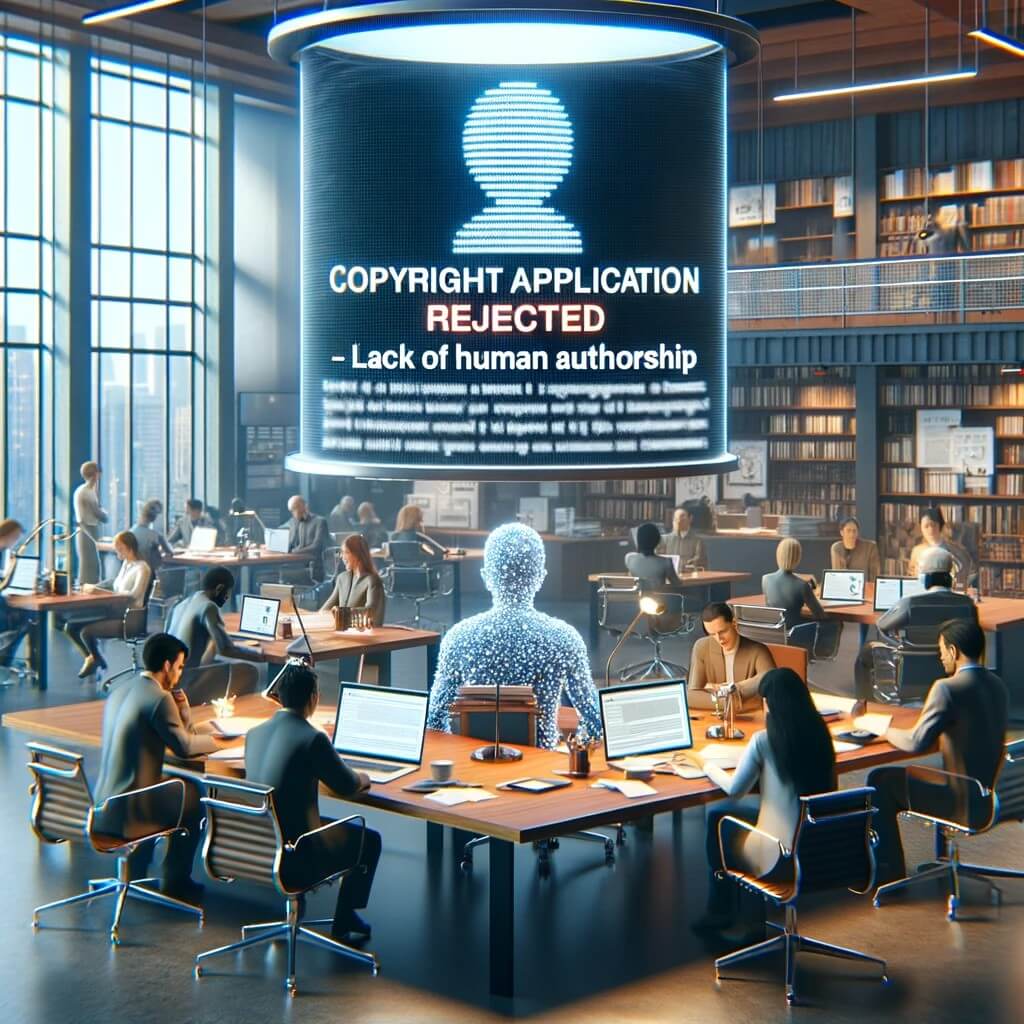Denied Recognition – Copyright Office Rejects AI-Generated Work Application, Board Cites Lack of Human Authorship
0
0

In a significant development on December 11, 2023, the United States Copyright Office Review Board declined a Second Request for reconsideration concerning the registration of an AI-generated work, challenging the notion of human authorship. Photographer Ankit Sahni’s application, revolving around the use of the RAGHAV Artificial Intelligence Painting App, presents a distinctive case that delves into the intricate dynamics of authorship in the realm of artificial intelligence.
Sahni’s copyright struggle – AI’s artistic complexities
Ankit Sahni’s journey began in December 2021 when he submitted an application to register a work co-authored by himself and the RAGHAV Artificial Intelligence Painting App. The Copyright Office sought additional information, prompting Sahni to detail RAGHAV’s functioning, particularly its application of “Neural Style Transfer.” Despite Sahni’s creative inputs, the Copyright Office rejected the registration in June 2022, asserting the indistinguishability of human authorship from the AI-generated work.
Sahni’s appeals and the Board’s firm stand on AI authorship
Undeterred, Sahni pursued a Second Request for reconsideration in July 2023, presenting three arguments. First, he argued that RAGHAV was an assistive tool, with his creative decisions sufficient for him to be recognized as the author. Second, he contended that traditional elements of authorship were present in his choices during the creative process. Lastly, Sahni asserted that the work was not a derivative but an evolution from the original photograph.
The Review Board, yet, remained steadfast in its rejection, emphasizing that copyright protection does not extend to creations of non-humans. The Board discredited Sahni’s argument that the work should be viewed as a whole, highlighting the distinct analyses required for pre-existing work and derivative authorship. The Board maintained that RAGHAV, by generating an entirely new image, lacked human authorship, and therefore, the Copyright Office would not register it.
The Board dismissed Sahni’s claim of creative control, emphasizing that RAGHAV was responsible for the final output. While acknowledging Sahni’s inputs, the Board concluded that they did not amount to human authorship. Sahni’s argument that RAGHAV was an assistive tool akin to photo-editing software was also refuted, with the Board emphasizing the AI application’s unique generation process.
Deciphering AI-generated works – Key takeaways from Sahni’s case
Over the past year, the Copyright Office has consistently asserted that AI-generated works require meaningful human creative effort for copyright protection. Sahni’s case, though involving more human authorship than some rejected applications, failed to meet the threshold set by the Copyright Office. The Board’s decision highlights the challenge of disclaiming AI-generated components, a requirement for copyright registration in such cases.
The Copyright Office’s stance, evident in the rejection of Sahni’s application, reflects a broader trend in safeguarding human creative effort in the face of increasing AI involvement in the artistic process. The decision stands in contrast to a recent ruling by China’s Beijing Internet Court, indicating jurisdiction-specific variations in the evaluation of AI-generated works.
In the evolving landscape of AI-generated works, questions surrounding human authorship persist. Sahni’s case serves as a notable example of the ongoing struggle to delineate the boundaries of creative input in the collaboration between humans and artificial intelligence. As technology continues to advance, the Copyright Office’s position raises essential inquiries about the future of copyright protection and the intricate relationship between human and machine creativity. How can we strike a balance that recognizes and protects human authorship while acknowledging the contributions of AI?
0
0
 Manage all your crypto, NFT and DeFi from one place
Manage all your crypto, NFT and DeFi from one placeSecurely connect the portfolio you’re using to start.


